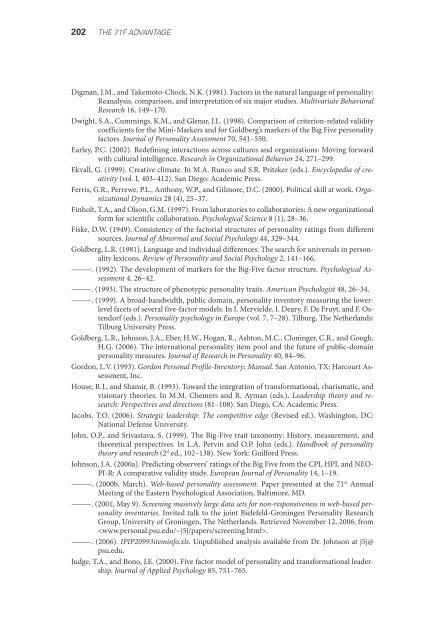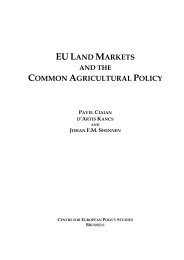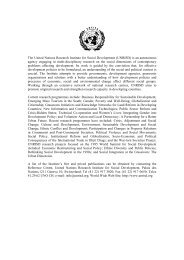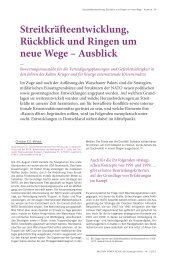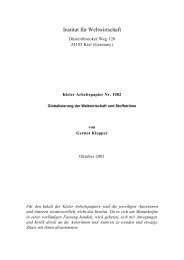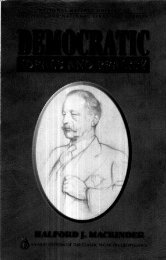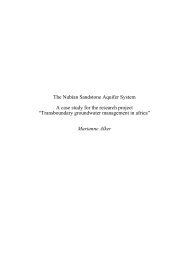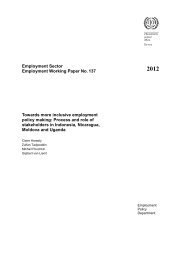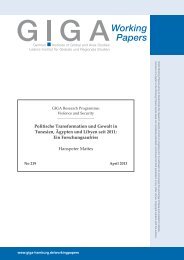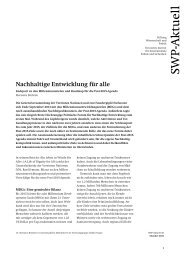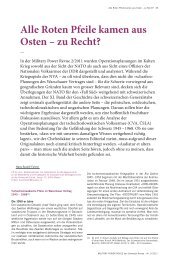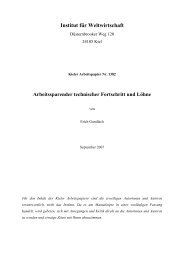Understanding and Measuring Creative Thinking in Leaders
Understanding and Measuring Creative Thinking in Leaders
Understanding and Measuring Creative Thinking in Leaders
You also want an ePaper? Increase the reach of your titles
YUMPU automatically turns print PDFs into web optimized ePapers that Google loves.
202 THE 71F ADVANTAGEDigman, J.M., <strong>and</strong> Takemoto-Chock, N.K. (1981). Factors <strong>in</strong> the natural language of personality:Reanalysis, comparison, <strong>and</strong> <strong>in</strong>terpretation of six major studies. Multivariate BehavioralResearch 16, 149–170.Dwight, S.A., Cumm<strong>in</strong>gs, K.M., <strong>and</strong> Glenar, J.L. (1998). Comparison of criterion-related validitycoefficients for the M<strong>in</strong>i-Markers <strong>and</strong> for Goldberg’s markers of the Big Five personalityfactors. Journal of Personality Assessment 70, 541–550.Earley, P.C. (2002). Redef<strong>in</strong><strong>in</strong>g <strong>in</strong>teractions across cultures <strong>and</strong> organizations: Mov<strong>in</strong>g forwardwith cultural <strong>in</strong>telligence. Research <strong>in</strong> Organizational Behavior 24, 271–299.Ekvall, G. (1999). <strong>Creative</strong> climate. In M.A. Runco <strong>and</strong> S.R. Pritzker (eds.). Encyclopedia of creativity(vol. I, 403–412). San Diego: Academic Press.Ferris, G.R., Perrewe, P.L., Anthony, W.P., <strong>and</strong> Gilmore, D.C. (2000). Political skill at work. OrganizationalDynamics 28 (4), 25–37.F<strong>in</strong>holt, T.A., <strong>and</strong> Olson, G.M. (1997). From laboratories to collaboratories: A new organizationalform for scientific collaboration. Psychological Science 8 (1), 28–36.Fiske, D.W. (1949). Consistency of the factorial structures of personality rat<strong>in</strong>gs from differentsources. Journal of Abnormal <strong>and</strong> Social Psychology 44, 329–344.Goldberg, L.R. (1981). Language <strong>and</strong> <strong>in</strong>dividual differences: The search for universals <strong>in</strong> personalitylexicons. Review of Personality <strong>and</strong> Social Psychology 2, 141–166.———. (1992). The development of markers for the Big-Five factor structure. Psychological Assessment4, 26–42.———. (1993). The structure of phenotypic personality traits. American Psychologist 48, 26–34.———. (1999). A broad-b<strong>and</strong>width, public doma<strong>in</strong>, personality <strong>in</strong>ventory measur<strong>in</strong>g the lowerlevelfacets of several five-factor models. In I. Mervielde, I. Deary, F. De Fruyt, <strong>and</strong> F. Ostendorf(eds.). Personality psychology <strong>in</strong> Europe (vol. 7, 7–28). Tilburg, The Netherl<strong>and</strong>s:Tilburg University Press.Goldberg, L.R., Johnson, J.A., Eber, H.W., Hogan, R., Ashton, M.C., Clon<strong>in</strong>ger, C.R., <strong>and</strong> Gough,H.G. (2006). The <strong>in</strong>ternational personality item pool <strong>and</strong> the future of public-doma<strong>in</strong>personality measures. Journal of Research <strong>in</strong> Personality 40, 84–96.Gordon, L.V. (1993). Gordon Personal Profile-Inventory: Manual. San Antonio, TX: Harcourt Assessment,Inc.House, R.J., <strong>and</strong> Shamir, B. (1993). Toward the <strong>in</strong>tegration of transformational, charismatic, <strong>and</strong>visionary theories. In M.M. Chemers <strong>and</strong> R. Ayman (eds.). <strong>Leaders</strong>hip theory <strong>and</strong> research:Perspectives <strong>and</strong> directions (81–108). San Diego, CA: Academic Press.Jacobs, T.O. (2006). Strategic leadership: The competitive edge (Revised ed.). Wash<strong>in</strong>gton, DC:National Defense University.John, O.P., <strong>and</strong> Srivastava, S. (1999). The Big-Five trait taxonomy: History, measurement, <strong>and</strong>theoretical perspectives. In L.A. Perv<strong>in</strong> <strong>and</strong> O.P. John (eds.). H<strong>and</strong>book of personalitytheory <strong>and</strong> research (2 d ed., 102–138). New York: Guilford Press.Johnson, J.A. (2000a). Predict<strong>in</strong>g observers’ rat<strong>in</strong>gs of the Big Five from the CPI, HPI, <strong>and</strong> NEO-PI-R: A comparative validity study. European Journal of Personality 14, 1–19.———. (2000b, March). Web-based personality assessment. Paper presented at the 71 st AnnualMeet<strong>in</strong>g of the Eastern Psychological Association, Baltimore, MD.———. (2001, May 9). Screen<strong>in</strong>g massively large data sets for non-responsiveness <strong>in</strong> web-based personality<strong>in</strong>ventories. Invited talk to the jo<strong>in</strong>t Bielefeld-Gron<strong>in</strong>gen Personality ResearchGroup, University of Gron<strong>in</strong>gen, The Netherl<strong>and</strong>s. Retrieved November 12, 2006, from.———. (2006). IPIP20993item<strong>in</strong>fo.xls. Unpublished analysis available from Dr. Johnson at j5j@psu.edu.Judge, T.A., <strong>and</strong> Bono, J.E. (2000). Five factor model of personality <strong>and</strong> transformational leadership.Journal of Applied Psychology 85, 751–765.


